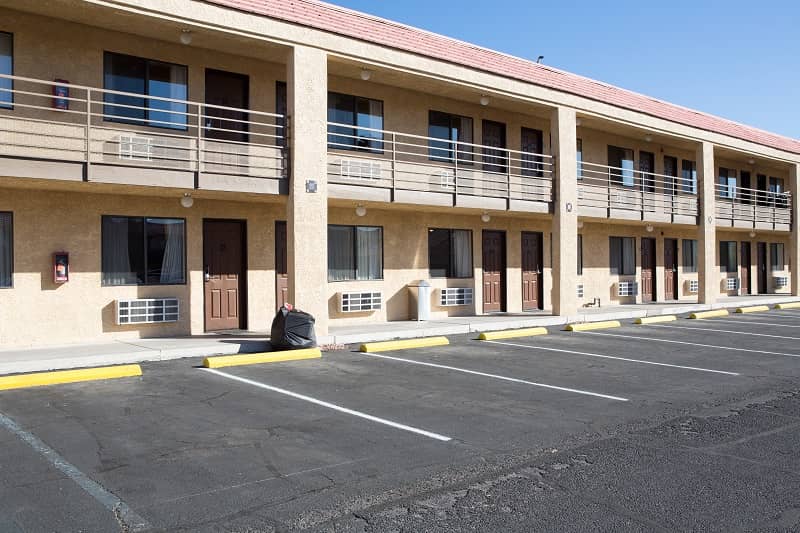Testimony of John A. Charles, Jr., regarding HB 3605: Requires Oregon Governments to Fund OPEB
Before the House Rules Committee, May 9, 2011
My name is John Charles and I am President & CEO of Cascade Policy Institute, a non-profit policy research organization. Cascade supports HB 3605 and believes it can be one of the most significant bills of the session.
HB 3605 grew out of concern regarding the unfunded, long-term public sector liabilities associated with “Other Post-Employment Benefits”, or OPEB. These benefits include things other than pensions, such as dental, vision and medical coverage.
All across the country, state and local governments are discovering that many of the commitments made to public employees about retirement benefits require funding that those units of government don’t have. Consequently, most governments are failing to place adequate reserves in trust funds to pay for future obligations. Instead, they are paying only what they owe current retirees, while allowing future obligations to quietly grow.
Up until recently, taxpayers and even most elected officials had no way of knowing how bad the problem was. However, in 2004 the Governmental Accounting Standards Board (GASB) adopted Statement 45, which requires that all units of government undertake a valuation of their OPEB obligations and state those obligations in annual financial reports. Implementation of GASB 45 was phased in during 2007-2009, and all units of government must now comply.
OPEB audits must calculate liabilities for all current and future retirees, amortized over a period not to exceed 30 years. Based on these calculations, actuaries determine what the Annual Required Contribution (ARC) would be if each entity paid for current OPEB benefits as well as a pro-rated share of future obligations.
However, the ARC is not actually mandatory, despite use of the word “required”; governments must publish information about net OPEB liabilities, but are not required to create OPEB trust funds or pay anything into trust funds. That remains a policy choice of each individual government.
Additional background information about GASB 45 is attached on the yellow sheet.
The Oregon Problem
A review last year of audited financial statements for 100 randomly-chosen Oregon governments (green spreadsheet, attached) by Jacob Szeto of the Oregon Capitol News (an affiliate of Cascade Policy Institute) showed that there are more than $3 billion in OPEB liabilities. Of that total, only 7.8% is funded. Most governments have no money set aside in OPEB trust funds, as can be seen in the “Funded Ratio” column on the green spreadsheet (3rd column from the right).
By way of comparison, at December 31, 2010, Oregon PERS was funded at roughly an 88% level, plus the total obligations are known. For OPEB liabilities, the level of under-funding is much worse, and the total obligations are not known. If there are $3 billion in unfunded OPEB liabilities from 100 units of government, one can only speculate what the total is for the roughly 1,700 units of government in Oregon.
Reliance on a pay-as-you-go system means that long-term unfunded liabilities will likely grow, creating cash flow problems for future managers, especially as large numbers of baby boomers begin retiring.
The Policy Solution: HB 3605 takes a very simple approach to this problem by requiring that all units of government in Oregon make Annual Required Contributions (ARC) into OPEB trust funds, as determined by outside actuaries.
This is not a new concept. ORS 238.420 already requires an ARC for the Retirement Health Insurance Account (RHIA), which is a multi-employer OPEB system administered by PERS. That law states in part:
“The Retirement Health Insurance Account shall be funded by employer contributions. Each public employer that is a member of the system shall transmit to the board such amounts as the board determines to be actuarially necessary to fund the liabilities of the account. The level of employer contributions shall be established by the board using the same actuarial assumptions it uses to determine employer contribution rates to the Public Employees Retirement Fund. The amounts shall be transmitted at the same time and in the same manner as contributions for pension benefits are transmitted under ORS 238.225.”
If you look on the green spreadsheet, you’ll notice that RHIA (listed as #2 on page one) has a funded ratio of 41.9%. It is one of the very few entities with any money in a trust fund. Although the agency has unfunded actuarial liabilities of $297 million, that amount represents only 3.5% of the covered payroll, so the risk is minor.
Some people may ask if this bill is an “attack” on organized labor, or government itself. The answer is “no.” It is simply an attempt to ensure that promises made to employees about retirement benefits are kept. If specific units of government will not have the money to keep those promises, then managers should have an adult conversation with their employees NOW, not at some unknown time in the future when the crisis explodes.
Note that HB 3506 does not tell governments how to respond to an OPEB funding problem; it simply requires them to comply with the ARC. If there is no way to make sufficient cash payments into OPEB trust fund accounts now, then that problem needs to be addressed, and there are probably thousands of ways that individual OPEB liabilities could be reduced.
One of the most common methods is to change the vesting period for post-employment benefits. If, for instance, employees now have only a two-year vesting period to receive retirement medical benefits, and the vesting period were changed to six years, the OPEB liability (as calculated by the actuaries) would go down, thus the ARC would go down.
For employees who actually work longer than six years, this would have no effect on their benefits, so it is a relatively painless way of addressing the OPEB funding problem.
Other potential solutions would depend on the specific nature of employee contracts at the various governments.
Poster Child for HB 3605: TriMet
A quick glance at the attached spreadsheet will show that TriMet is #1 in unfunded liabilities, by any measure. In fact, the agency is not just #1 – it is an outlier so extreme that it begs some form of explanation. A brief discussion may assist legislators in understanding the need for HB 3605.
In 1994 TriMet changed the basic template of its union contract, incrementally lowering the age of retirement and dramatically increasing post-employment benefits. The cost of these obligations steadily accrued each year, but TriMet did not create a trust fund to pay for them. Since GASB 45 did not yet exist, almost no one outside the agency knew about this ticking time bomb.
In 2008 TriMet adopted GASB 45, and the district’s outside audit showed, for the first time, a “schedule of funding progress” for OPEB. The Unfunded Actuarial Accrued Liability (UAAL) for OPEB as of January 1, 2008 was $ 632 million.
In the 2010 TriMet budget document, the narrative to the Board stated, “TriMet needs to begin to take steps to partially fund a retiree-medical trust to assure a funding source for retiree health benefits, which have already been accrued but are not yet funded.” That was a clear and concise statement of need — yet the adopted budget for that year (FY 10-11) included zero funding for the OPEB trust fund.
In the very back of that document, on page 241, TriMet presented a revealing 10-year financial forecast. A copy is attached (the blue page). In that forecast, TriMet predicted that it would finally begin funding the OPEB trust with a token payment of $1 million in 2012, followed by identical payments for the next four years (line U on the blue sheet). The agency did not anticipate getting serious until FY 2019, when it projected an OPEB payment of $10 million.
Five months later, TriMet’s 2010 audit was released. The audit showed that in just two years the OPEB liability had ballooned from $632 million to $817 million, and all of it was unfunded.
Last month, TriMet released its draft budget for FY 11-12. The narrative is now much more evasive about the subject of OPEB. On page six, it simply states, “The FY 12 proposed budget reflects pay as you go funding of OPEB costs for retirees, and an initial deposit to an OPEB trust to begin funding future retiree OPEB benefit.” It does not say how much. Also, the 10-year financial forecast page has been deleted.
If you search long enough, however, you can finally find on page 45 that the promised payment of $1 million has been downgraded to $410,000. Meanwhile, the OPEB liability keeps rising by the month, and is now probably in the neighborhood of $900 million.
Like high school students who keep telling their parents that they will start on that big term paper “tomorrow”, the TriMet Board has been procrastinating for 17 consecutive years on OPEB. This is setting up both employees and future board members for a massive meltdown later this decade.
It is important to note that TriMet’s OPEB problem is not the result of declining revenues. To the contrary, TriMet has been one of the few units of government with rising revenues, thanks in part to the legislature.
In both 2003 and 2009 the legislature authorized increases in the regional payroll and self-employment tax for TriMet (and Lane County Transit). TriMet began implementing the tax rate hike in January 2005, and will continue to implement it by raising the rate by 1/100th of a percentage point every year through 2024.
The chart below shows that the payroll tax increase, combined with substantial increases in passenger fares and federal grants, has led to both operating and capital funding increases that most local governments could only dream of.
TriMet Financial Resources, 2004-2012[1]
(millions)
| FY 04/05 | FY 08/09 | FY 09/10 | FY 10/11 (est) | FY 11/12 (budget) | % Change 04/05-11/12 | |
| Passenger Fares | $ 59.49 | $ 90.10 | $ 93.73 | $ 97.97 | $103.80 | 74.5% |
| Payroll tax revenue | $171.23 | $209.10 | $207.10 | $217.20 | 229.10 | 33.8% |
| Total operating resources | $308.77 | 397.24 | $423.50 | $424.20 | $443.21 | 43.6% |
| Total resources | $493.72 | $888.35 | $809.75 | $763.66 | $1,004.44 | 103.44% |
TriMet will likely respond by stating that the purpose of the payroll tax rate increase was to pay for the “operating cost of new service”, not OPEB liabilities, which is true; but as the chart below illustrates, the increased service never materialized. In fact, service has been steadily dropping for the past three years:
Service Trends for TriMet Since the Payroll Tax Rate Increased in 2005
Fixed Route Service – light rail, bus, commuter rail[2]
| March 2004 | March 2006 | March 2008 | March 2010 | March 2011 | % Change | |
| Peak vehicles | 620 | 602 | 611 | 627 | 599 | -3.4% |
| Service hours | 147,138 | 143,308 | 144,912 | 143,089 | 132,777 | -9.8% |
| Vehicle miles | 2,684,606 | 2,620,246 | 2,546,365 | 2,531,041 | 2,357,214 | -12.2% |
To summarize, the agency hit a gusher of cash in the past seven years, but proceeded to cut service by 12% while dramatically increasing its unfunded OPEB liability. This is a financial disappearing act that would make Penn & Teller envious.
While TriMet is an extreme form of the management problem HB 3605 attempts to address, the challenge is the same across the board: promises are being made at many governments for post-employment benefits that probably cannot be kept. The time to deal with fiscal reality is now. The legislature should step in to require that modest steps be taken based on a 25-year amortization schedule.
It is rare that legislators have a chance to enact laws that will demonstrably make a positive difference for future generations. This is one of those cases.
Thank you for your consideration.
[1] TriMet budget documents, various years, 2004-2011
[2] TriMet monthly performance reports, 2004-2011











